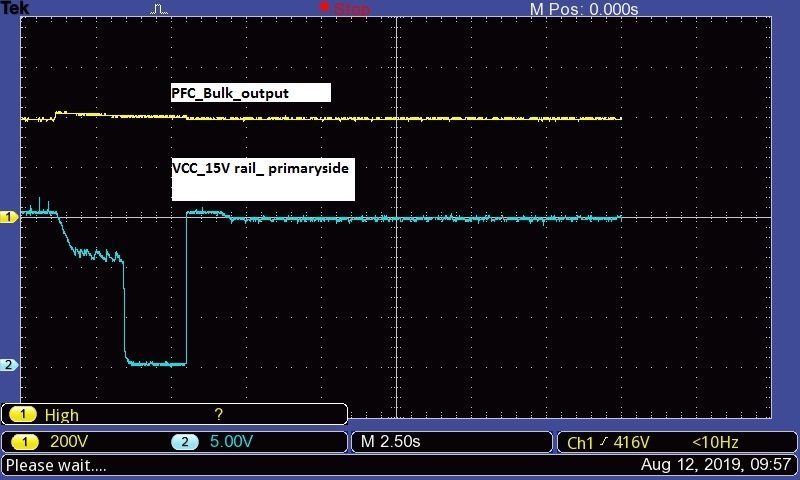Other Parts Discussed in Thread: UCC256302
Hi ,
We have designed power supply based on TIDA-010015 model (24V output) with new PFC inductor and Transformer for 600W. It is working with full power delivery and efficiency at 230VAC input (direct from socket or Auto transformer) but with low input voltage ( 110VAC) system not working properly and having problem every time while loading.
For 110V AC testing also we used Auto transformer but we are facing issues as below:
Problem 1. Auto Transformer generates Humming noise even when board operating at 45W load and it keeps on increasing. At one stage board goes to hiccup mode (at 7A).
Problem 2. Some time while increasing load, board got problem where active inrush circuit goes bad (MOSFET Q3+ FUSIBLE resistor R12) . (Ref design part : EMC2-47RKI and our design part : PR02FS0204709KR500). We did the testing multiple times and always find active Inrush limiter circuit going bad.
To confirm problem is not there with Auto transformer, we use the same with Meanwell power supply UHP-350-12 for 110V AC and didn't observer any humming noise.
Please share some pointers to start the debugging.
Note: We have a strict requirement for 100-125VAC input for full load.


